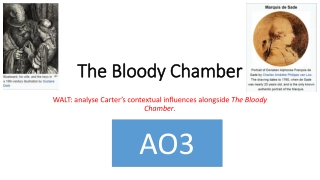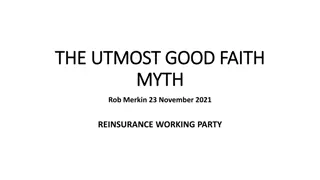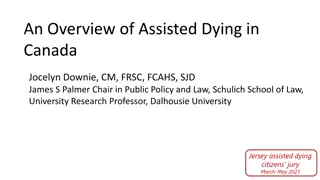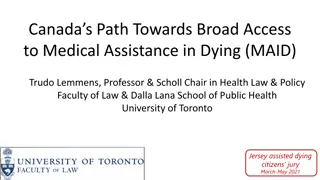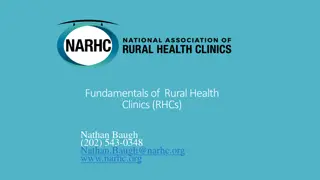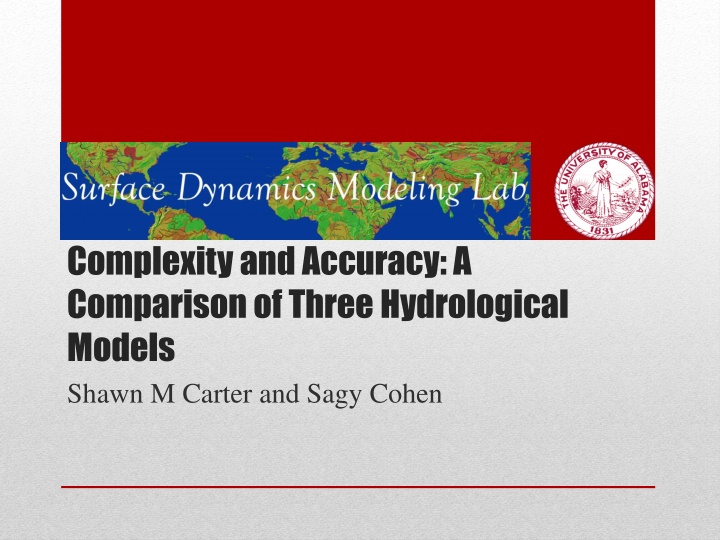
Comparison of Three Hydrological Models - Complexity vs. Accuracy
Explore the impact of geological, biotic, and cultural factors on the accuracy and speed of macroscale hydrological models - NFIE-Hydro, VIC, and WBMplus. Gain insights into streamflow predictions and computational statistics through a comparison against observed data from USGS stream gauges.
Download Presentation

Please find below an Image/Link to download the presentation.
The content on the website is provided AS IS for your information and personal use only. It may not be sold, licensed, or shared on other websites without obtaining consent from the author. If you encounter any issues during the download, it is possible that the publisher has removed the file from their server.
You are allowed to download the files provided on this website for personal or commercial use, subject to the condition that they are used lawfully. All files are the property of their respective owners.
The content on the website is provided AS IS for your information and personal use only. It may not be sold, licensed, or shared on other websites without obtaining consent from the author.
E N D
Presentation Transcript
Complexity and Accuracy: A Comparison of Three Hydrological Models Shawn M Carter and Sagy Cohen
Since 1903: Floods cost an average $5.4 billion and over 90 lives per year in the United States1 More than half of fatalities from natural disasters worldwide are caused by floods 20thcentury hydrological science emphasis has been focused on: Hill slope Reach Small Catchment Scale2 21stcentury hydrological science undergoing paradigm shift to ever increasing scales Global Water Crisis Acceleration of hydrological cycle in response to global climate change 1NOAA s National Weather Service (2014), NOAA s National Weather Service, Hydrologic Information Center, Available from: http://www.nws.noaa.gov/hic/ (Accessed 1 April 2015) Motivation 2V r smarty, C. J., C. Pahl-Wostl, S. E. Bunn, and R. Lawford (2013), Global water, the anthropocene and the transformation of a science, Curr. Opin. Environ. Sustain., 5(6), 539 550, doi:10.1016/j.cosust.2013.10.005.
Continental scale water balance and transport models are key components in research and operational efforts relating to national water resources and flood predictions Several model frameworks developed in the past two decades3 Hydrological models vary considerably in processes simulated, input parameters, scale, numerical algorithms Few efforts made in comparing models 3Arora, V. K. (2001), Streamflow simulations for continental-scale river basins in a global atmospheric general circulation model, Adv. Water Resour., 24(7), 775 791, doi:10.1016/S0309-1708(00)00078-6. Macroscale Models
Test and validate the accuracy, speed, and investment required for three macroscale hydrological models. Gain insights into how geological, biotic, and cultural influences affect each model. Goal
Compare outputs of NFIE-Hydro, VIC, and WBMplus using same meteorological forcing data. Streamflow predictions and Computational statistics Objectives
Compare each models streamflow predictions against observed time series and statistics from multiple USGS stream gauges Gauges will represent a wide diversity of geological, geographical, and climatic regimes Comparison will also include performance against each stream s geology, relief, anthropogenic impacts, and natural landscapes Offer insight into how each model s parameter inputs limit or enhance accuracy Streamflow Predictions
Do more complex models offer more accurate results? Are the most accurate models constrained by computational and/or input data preparation investments? Computational Statistics
Global hydrology model Spatially and temporally explicit parameters First large-scale modeling scheme that was applied to the global setting WBMplus
Models full water and energy balances. Incorporates leaf area indices and antecedent moisture VIC
Continental scale hydrologic framework operating on NFIE-Geo linking weather forecasts, land-atmosphere interface and channel flow routing to produce probabilistic flood forecasts NFIE-Hydro
Arora, V. K. (2001), Streamflow simulations for continental-scale river basins in a global atmospheric general circulation model, Adv. Water Resour., 24(7), 775 791, doi:10.1016/S0309-1708(00)00078-6. Greenough, G., M. McGeehin, S. M. Bernard, J. Trtanj, J. Riad, and D. Engelber (2001), The potential impacts of climate variability and change on health impacts of extreme weather events in the United States, Environ. Health Perspect., 109(2), 191 198. Groisman, P. Y., R. W. Knight, D. R. Easterling, T. R. Karl, G. C. Hegerl, and V. N. Razuvaev (2005), Trends in intense precipitation in the climate record, J. Clim., 18(9), 1326 1350, doi:10.1175/JCLI3339.1. Horberger, G. M., E. Bernhardt, W. E. Dietrich, E. Dara, G. E. Fogg, and E. . Georgiou (2012), Challenges and opportunities in the hydrologic sciences, Washington, DC. Liang, X., D. P. Lettenmaier, E. F. Wood, and S. J. Burges (1994), A simple hydrologically based model of land surface water and energy fluxes for general circulation models, J. Geophys. Res., 99(D7), 14415, doi:10.1029/94JD00483. Maidment, B. D. R. (2015), A Conceptual Framework for the National Flood Interoperability Experiment. National Science Board (2007), Hurrican warning: The critical need for a national hurricane research initiative, Arlington, VA. NOAA s National Weather Service (2014), NOAA s National Weather Service, Hydrologic Information Center, Available from: http://www.nws.noaa.gov/hic/ (Accessed 1 April 2015) V r smarty, C. J., C. Pahl-Wostl, S. E. Bunn, and R. Lawford (2013), Global water, the anthropocene and the transformation of a science, Curr. Opin. Environ. Sustain., 5(6), 539 550, doi:10.1016/j.cosust.2013.10.005. Wisser, D., S. Frolking, E. M. Douglas, B. M. Fekete, C. J. V r smarty, and A. H. Schumann (2008), Global irrigation water demand: Variability and uncertainties arising from agricultural and climate data sets, Geophys. Res. Lett., 35(24), L24408, doi:10.1029/2008GL035296. References


